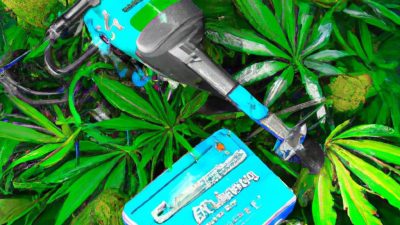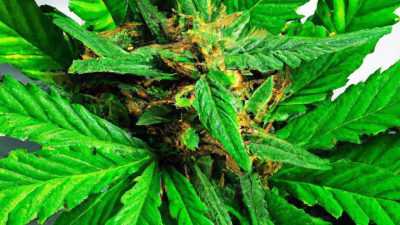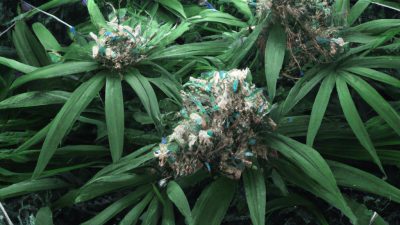
Inline Solvent Detection for R134a and Ethanol Systems in Cannabis Processing
the cannabis industry is rapidly evolving with continuous advancements in extraction technology and post-processing methods. Among these, the use of solvents such as R134a (1,1,1,2-Tetrafluoroethane) and ethanol is widespread for extracting cannabinoids, terpenes, and other valuable compounds from the cannabis plant. However, ensuring safety, product quality, and regulatory compliance requires vigilant monitoring of residual solvents during and after extraction. This is where inline solvent detection systems provide a game-changing solution.
Why inline Solvent Detection Matters in Cannabis Extraction
Solvent-based extraction processes, especially those using R134a and ethanol, necessitate precise control and monitoring to deliver safe, high-quality cannabis concentrates. Residual solvents can pose health risks and degrade product purity if not properly detected and managed. Inline solvent detection integrates real-time sensing directly within extraction or post-processing equipment, offering several key benefits:
- Immediate feedback: Enables operators to monitor solvent levels instantly, reducing the risk of unsafe residual concentrations.
- Higher throughput: Minimizes downtime compared to traditional batch testing methods.
- Improved safety: Early detection of solvent leaks or accumulation protects workers and facilities.
- Regulatory compliance: Ensures product meets local and international residual solvent limits.
- Cost-efficiency: Reduces the need for costly lab analyses by performing inline screening.
Understanding R134a and Ethanol as Solvents in Cannabis Extraction
both R134a and ethanol are common solvents in cannabis post-processing,each offering unique advantages and considerations when it comes to solvent detection.
R134a in Cannabis Extraction
R134a is a hydrofluorocarbon refrigerant increasingly favored in supercritical and subcritical extraction systems due to its low toxicity, non-flammability, and ability to selectively extract cannabinoids and terpenes efficiently. It is indeed frequently enough used in closed-loop extraction systems where solvent recovery and reuse are critical.
Ethanol as a Cannabis Solvent
Ethanol extraction is widely popular for its efficacy, food-grade status, and relatively low environmental impact, especially in cold-ethanol extraction techniques. However, ethanol is flammable and requires careful handling, plus the removal of residual solvent is key to producing safe concentrates.
How Inline Solvent detection Systems Work
Inline solvent detection utilizes various sensor technologies integrated directly within the solvent flow path or finishing equipment.Common detection principles include:
- Infrared spectroscopy (IR): Measures absorption of IR light by solvent molecules to quantify concentration.
- Gas sensors: Detect volatile organic compounds (VOCs) emitted by solvents in real-time.
- Differential pressure and flow sensors: Identify anomalies that may indicate leaks or excessive solvent presence.
- Chromatography integration: Advanced setups couple inline sensors with rapid chromatographic analysis.
Implementation in Extraction and Post-Processing Equipment
inline sensors can be installed in multiple points of a cannabis extraction system, including:
- Solvent recirculation lines
- Extractor output streams
- Winterization and filtration stages
- Final concentrate tanks and packaging lines
This integration ensures thorough monitoring throughout the cannabis post-processing workflow.
Benefits of Inline Detection for Cannabis Producers
| Benefit | Description | Impact on Cannabis Processing |
|---|---|---|
| Real-Time Monitoring | Continuous solvent level readings throughout extraction. | Prevents contamination, improves batch consistency. |
| Reduction in Product Waste | Fewer batches rejected due to excessive solvent residues. | Increased yield and profitability. |
| Compliance Assurance | Helps meet stringent solvent residue limits by FDA, EPA, and local authorities. | Enables legal market entry and consumer trust. |
| Enhanced Safety | Early leak detection reduces fire and explosion risks. | Protects workers and assets. |
Practical Tips for Integrating Inline Solvent Detection in Cannabis Facilities
- choose sensors compatible with your solvent: Different solvents need sensors calibrated to their chemical signatures – ensure your detection system supports both R134a and ethanol if your operation uses both.
- Plan sensor placement strategically: Locate sensors at critical control points where solvent presence impacts quality and safety most.
- Train staff adequately: Ensure operators understand sensor data outputs and respond quickly to alerts.
- Combine inline detection with periodic laboratory analysis: Inline systems improve efficiency but shoudl complement, not replace, traditional lab tests initially, especially for new production lines.
- Maintain and calibrate sensors regularly: Routine maintenance ensures accuracy and longevity.
Case Study: Inline Solvent Detection Boosting Efficiency in a Mid-Sized cannabis Extractor
A mid-sized cannabis extraction business transitioned to an inline solvent detection system within its R134a recovery circuit and ethanol wash tanks. Key outcomes after 6 months included:
- 30% reduction in solvent waste due to early leak detection and improved recovery
- 20% faster batch processing times as inline readings replaced waiting for lab test results
- Zero regulatory non-compliance incidents regarding residual solvents
- Improved product consistency resulted in positive market feedback and repeat customers
This success story underscores the pivotal role of inline solvent detection technology in modern cannabis post-processing approaches.
Conclusion
Inline solvent detection for R134a and ethanol systems marks a significant step forward in cannabis extraction technology. By embedding real-time solvent monitoring directly into the processing line, cannabis producers enhance product safety, reduce operational risks, improve quality control, and streamline compliance. as legal cannabis markets continue to mature, embracing technologies like inline solvent detection becomes not just favorable but essential. Whether you operate a small craft extraction lab or a large-scale cannabis processing facility, investing in robust inline solvent detection systems will elevate your operation’s integrity and competitiveness.
For cannabis manufacturers seeking to optimize solvent management and uphold the highest standards in extraction, integrating inline solvent detection systems offers a proven path to safer, more efficient, and more compliant cannabis production.





